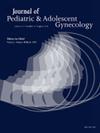A Developmentally-Informed Model of Adolescent Decision-Making Around Pregnancy: A Qualitative Study
IF 1.8
4区 医学
Q3 OBSTETRICS & GYNECOLOGY
引用次数: 0
Abstract
Study Objective
This study sought to formulate a model of the process through which adolescents and young adults (AYAs) progress when making decisions around pregnancy.
Methods
We recruited United States-based participants aged 18-35 years in 2020-2021 who experienced pregnancy under age 20 across 3 pregnancy outcomes (parenting, adoption, abortion). Through semi-structured phone interviews, we explored participants’ emotions around pregnancy, pregnancy disclosures, and pregnancy-related decision-making. We used qualitative analysis to identify common themes in the steps of the process experienced by participants in their decision-making and associated influences and develop a model of that process.
Results
We interviewed 50 participants aged 13-19 years at the time of 1 or more pregnancies, totaling 56 pregnancies (16 parenting, 19 abortions, 18 adoptions, and 3 miscarriages). The developed Pregnancy Decision-making and Outcome Trajectories (PDOT) model incorporates varied trajectories of intention establishment/achievement. PDOT has 4 stages: 1) initial reactions, 2) intention analysis, 3) planning, and 4) action/inaction. PDOT highlights AYA potential to experience persistent uncertainty around pregnancy but also potential to express certainty and move toward thoughtful research, support-seeking, and cost/benefit analysis. PDOT also highlights the impact of barriers and facilitators that limit AYAs from or help AYAs with achieving their desired pregnancy outcome.
Conclusion
Pregnant AYAs experience difficulty making and following through with decisions around pregnancy outcomes. People interfacing with pregnant AYAs can utilize this framework to give AYAs appropriate, intentional support to boost AYA agency in making decisions around pregnancy and acting on those decisions.
青春期怀孕决策的发育知情模型:一项定性研究。
研究目的:本研究试图建立一个青少年和年轻人(AYAs)在决定怀孕时的过程模型。方法:我们在2020-2021年招募了年龄在18-35岁的美国参与者,她们在20岁以下怀孕,有三种妊娠结局(养育、收养、堕胎)。通过半结构化的电话访谈,我们探讨了参与者对怀孕、怀孕信息披露和怀孕相关决策的情绪。我们使用定性分析来确定参与者在决策过程中所经历的过程步骤中的共同主题以及相关影响,并开发了该过程的模型。结果:我们采访了50名年龄在13-19岁的怀孕1次或1次以上的参与者,共计56次怀孕(16次为人父母,19次堕胎,18次收养,3次流产)。已开发的妊娠决策和结局轨迹(PDOT)模型包含了不同的意图建立/实现轨迹。PDOT有四个阶段:1)初始反应,2)意图分析,3)计划,4)行动/不行动。PDOT强调,AYA有可能经历怀孕期间持续的不确定性,但也有可能表达确定性,并走向深思熟虑的研究、寻求支持和成本/效益分析。PDOT还强调了障碍和促进因素的影响,这些障碍和促进因素限制了AYAs从或帮助AYAs实现其期望的怀孕结果。结论:怀孕的aya在决定妊娠结局方面存在困难。与怀孕的AYAs接触的人可以利用这个框架给AYAs适当的、有意的支持,以促进AYA机构在怀孕方面做出决定并根据这些决定采取行动。
本文章由计算机程序翻译,如有差异,请以英文原文为准。
求助全文
约1分钟内获得全文
求助全文
来源期刊
CiteScore
3.90
自引率
11.10%
发文量
251
审稿时长
57 days
期刊介绍:
Journal of Pediatric and Adolescent Gynecology includes all aspects of clinical and basic science research in pediatric and adolescent gynecology. The Journal draws on expertise from a variety of disciplines including pediatrics, obstetrics and gynecology, reproduction and gynecology, reproductive and pediatric endocrinology, genetics, and molecular biology.
The Journal of Pediatric and Adolescent Gynecology features original studies, review articles, book and literature reviews, letters to the editor, and communications in brief. It is an essential resource for the libraries of OB/GYN specialists, as well as pediatricians and primary care physicians.

 求助内容:
求助内容: 应助结果提醒方式:
应助结果提醒方式:


